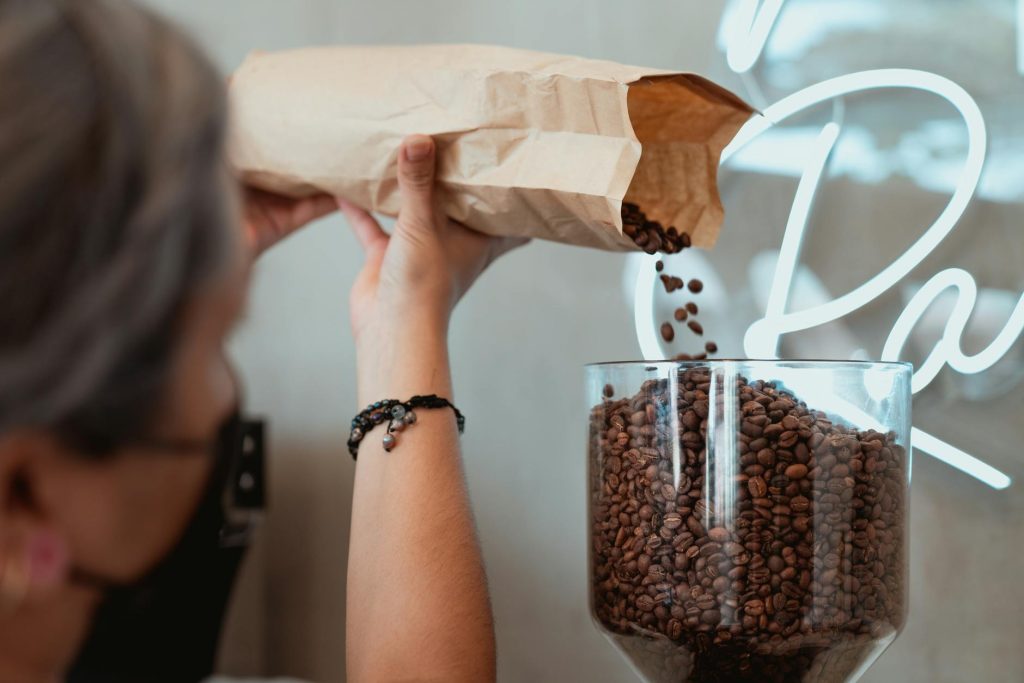Caffeine junkies, listen up. Ever stared into your steaming mug and wondered what dark magic was at play? Forget mystical rituals; it’s all about chemistry. From the moment the green coffee beans hit the roaster to that first, glorious sip, a complex series of reactions dictates your coffee’s flavor, aroma, and body. Let’s crack the code.
The Roasting Revelation: A Chemical Inferno
The transformation begins with roasting, a high-temperature dance that coaxes out hundreds of flavor compounds. Think of it as a controlled explosion. The Maillard reaction, a key player, is where amino acids and sugars react, creating the complex flavors we crave. It’s the same reaction that gives bread its crust and a good steak its seared deliciousness.
During roasting, the beans lose water and gain volume, developing their characteristic brown color. This is not just a cosmetic change. It’s a cascade of chemical alterations that unlock coffee’s potential. The longer the roast, the more complex the flavors become, ranging from nutty and chocolatey to burnt and bitter. The roaster’s skill lies in controlling this process, creating the desired flavor profile while avoiding the dreaded scorched earth scenario.
The roasting process also influences the bean’s acidity. Acidity is not a bad thing; it provides brightness and complexity. However, too much acidity, or the wrong kind, can make your coffee taste sour. Roasting brings forth the precursors to acidity, which are then further developed through brewing.
Brewing Battles: Extraction and its Enemies
Once roasted, the beans are ready for brewing, the act of extracting the soluble compounds that create the liquid gold. The brewing process involves dissolving flavors and aromas from the coffee grounds into water. This is an art form, but also governed by scientific principles. Water temperature is crucial. Too cold, and you’ll under-extract, leaving behind a weak, sour brew. Too hot, and you’ll over-extract, yielding a bitter, astringent cup.
Extraction involves several key steps. First, the water saturates the grounds, allowing the compounds to dissolve. Then, the water carries the dissolved compounds through the coffee bed. As the water passes through, it picks up different compounds at different rates. The first compounds to extract are acids, followed by sugars, and then the bitter components. This explains why brew time, along with the water’s contact, plays a crucial role in balancing flavor.
Different brewing methods, such as drip, French press, or espresso, offer unique approaches to extraction. Each method changes the water contact time, pressure, and temperature. For example, espresso uses high pressure to force water through finely ground coffee, resulting in a concentrated, rich beverage. Drip brewing, on the other hand, relies on gravity and a slower extraction process, producing a more delicate cup.
Water: The Unsung Hero
Water quality is often overlooked, but it’s a critical factor. The mineral content of your water can profoundly affect your coffee’s flavor. Hard water, with high mineral content, can mute the flavors and create a flat taste. Soft water may extract more flavors, but it can also make the coffee taste sour if the water’s not right. Ideal water for coffee contains a balanced amount of minerals. This ensures optimal extraction and delivers the best flavor possible.
The Specialty Coffee Association has published detailed guidelines on the ideal water composition for coffee brewing. You can find detailed information on this Specialty Coffee Association (SCA). Using filtered water is a smart starting point, but exploring the nuances of water chemistry can take your coffee game to the next level.
The Bitter Truth: Understanding Bitterness
Bitterness, often considered a negative attribute, can be an integral component of a cup of coffee. The trick is to balance it with other flavors. Over-extraction is the enemy, leading to a harsh, unpleasant bitterness. This results in the extraction of bitter compounds. Conversely, under-extraction produces a weak and sour taste, lacking the depth and complexity we seek.
The type of coffee bean and the roasting process also contribute to bitterness. Darker roasts tend to have more bitterness than lighter roasts. Brewing time, water temperature, and grind size affect bitterness levels. Finding that perfect balance is an art and science, requiring experimentation and an understanding of extraction principles. Keep in mind that bitterness isn’t always a bad thing; it can add depth and complexity to the experience.
Caffeine: The Wake-Up Call
Let’s not forget the stimulant we all crave: caffeine. Caffeine is a naturally occurring compound in coffee beans, affecting the central nervous system. The amount of caffeine varies depending on the bean type, roasting method, and brewing process. Darker roasts, while they appear stronger due to their color, can have less caffeine than lighter roasts. This is because caffeine breaks down during the roasting process.
The brewing method also impacts caffeine content. Espresso, for example, is generally higher in caffeine per serving than drip coffee, mainly due to the concentration. Furthermore, the caffeine content also depends on the bean itself. Robusta beans typically have about twice as much caffeine as Arabica beans.
For more details on coffee’s chemical properties, check out this enlightening American Chemical Society (ACS) resource. The effects of caffeine on the body are numerous, and it’s a fascinating subject. Just keep in mind that caffeine is a powerful substance, so consume it responsibly.
Mastering the Perfect Cup: The Bottom Line
Creating the perfect cup involves understanding the chemistry behind every step of the process. From roasting to brewing, each variable plays a crucial role. Experiment, learn, and appreciate the science. Don’t be afraid to try different beans, brewing methods, and water sources until you achieve that ideal balance of flavors. The quest for the perfect cup is a journey worth taking. It’s a never-ending exploration, and you’ll be surprised what you learn.
And hey, if your experimentation leads to some truly epic coffee creations, you’re going to need a proper vessel. Because let’s be honest, you can’t be a true coffee aficionado unless you’re drinking from something that reflects your passion. So go on, get your hands on an inspirational coffee mug and celebrate your hard-earned coffee mastery. It’s the only way to do it. First Coffee, Then the Things.

